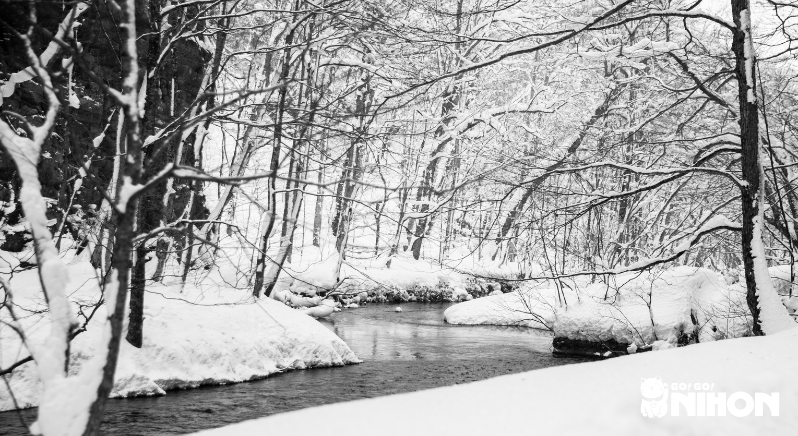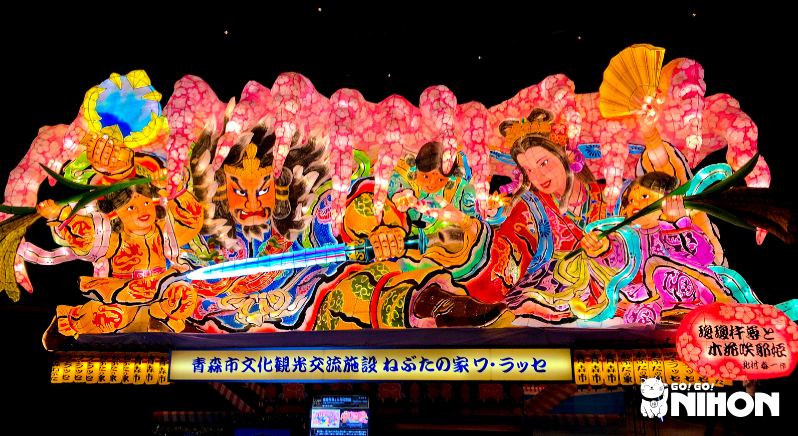When you visit Aomori prefecture, the northernmost prefecture on Japan’s main island (Honshū), especially in the Tsugaru area, you hear a dialect very different from the standard Japanese you would hear in Tokyo. The dialect is called Tsugaru-ben and is known to be one of the most difficult dialects for non-speakers to understand.
Today, we will introduce you to the Tsugaru area of Japan and its unique dialect, Tsugaru-ben.

About the Tsugaru area
Aomori Prefecture is located in the northernmost part of Honshū at about the same latitude as New York. So it is very cold in winter with a lot of snow. It is normal to see snow accumulation of more than one meter every year, especially in the Tsugaru area.
Aomori has rich agriculture, forestry, and fishing industries and is known for producing apples, garlic, burdocks, and scallops which provide rich food resources to not only the local area but people across Japan.
Aomori prefecture is divided by the Ōu Mountains, located in the center of the prefecture, into two areas: the Tsugaru area in the west and the Nanbu area in the East. In the Tsugaru area, people speak Tsugaru-ben, and in the Nanbu area, people speak Nanbu-ben. Because those areas are separated by tall mountains and they had a conflict for years, due to their historical relationship, Tsugaru-ben and Nanbu-ben have different words, sentence endings, and intonation so people often do not understand each other. One thing the two dialects have in common is that they are short compared to the Tokyo dialect.
It is said that the reason for it being shorter is that people in Aomori do not want to open their mouths for too long in such cold weather! In the next section, we will introduce Tsugaru-ben and its features so if you want to know more about it, keep reading!

Introduction to Tsugaru-ben
Pronunciation
One of the differences between Tsugaru-ben and Tokyo-ben is its pronunciation. For example, In Tugaru-ben, there is no distinction between “shi” and “su,” “chi” and “tsu,” and “ji” and “zu”. So when pronouncing the word sushi, the pronunciation would be “susu” with the intonation the same as Tokyo ben’s pronunciation. Another example is that in Tsugaru-ben, “ka” and “ta” lines at the middle and end of a word become “ga” and “da” lines. For example, the word takai (high or expensive) can be pronounced as “tagai” in Tsugaru-ben. There are more, but we will keep those for next time.
Grammar
There are many grammatical differences between Tsugaru-ben and Tokyo-ben so we will introduce some that are quite noticeable here.
First, Tsugaru-ben does not use the subject marker particle “ga.” They also don’t use the direct object particle “wo.” Instead of the direct object “o” they sometimes use “godo” or “ba” to emphasize the object. Second, you will hear a lot of “be” ending in Tsugaru-ben because in Tsugaru-ben, “be” expresses will, solicitation, and inference. Especially for inference, people will add “on” to “bi” and say “byon.”
Isn’t it interesting to learn how different the dialect is from the standard, Tokyo-ben? Now, let’s learn some phrases in Tsugaru-ben and see how different they are from Tokyo-ben.
Phrases in Tsugaru-ben
しゃっこい — shakkoi
It means “cold.” In Tokyo-ben, it is つめたい.
めんこい — menkoi
It means “cute.” In Tokyo-ben, it is かわいい.
あめっこ — amekko
It means “candies.” in Tokyo ben, it is あめ.
へば — heba
It means “then.” In Tokyo-ben, it is じゃあ.
へばね — hebane
It means “see you soon.” in Tokyo-ben, it is またね.
Forming sentences in Tsugaru-ben
せばだば まいね びょん — sebadaba maine byon
It means “That won’t do.”
In Tokyo-ben, it is something like: それじゃあ だめ でしょう — sore jā dame deshō
That is not good.
Sentence breakdown
せばだば — sebadaba
It means それじゃあ (sorejā) in Tokyo-ben, meaning “that is” in English.
まいね — maine
It means だめ (dame) meaning “not ok” in English, and びょん (byon) is the ending that implies inference.
Now you see how different they are. Isn’t it fascinating that people speak very different dialects depending on where they live?

Learn more about the Tsugaru area
Did reading this article make you want to visit the Tsugaru area of Aomori? In Tsugaru, there are many tourist attractions such as cherry blossoms at Hirosaki Castle and the Nebuta Festival, and it is worth visiting!
If you want to learn about the Tsugaru area and its culture, you can read the book “Return to Tsugaru” written by Osamu Dazai, a writer who wrote the famous book “No Longer Human.”
If you are interested in other Japanese dialects, we have a blog article about Kansai-ben.
We also have a short online Kansai-ben course for you! Visit our website for more information and to sign up.
If you want to stay longer in Japan, why not study abroad with Go! Go! Nihon? Although we do not have schools in Aomori yet, you can travel across the country during the holidays!
For more information about Japanese culture, keep following the Go! Go! Nihon blog.




